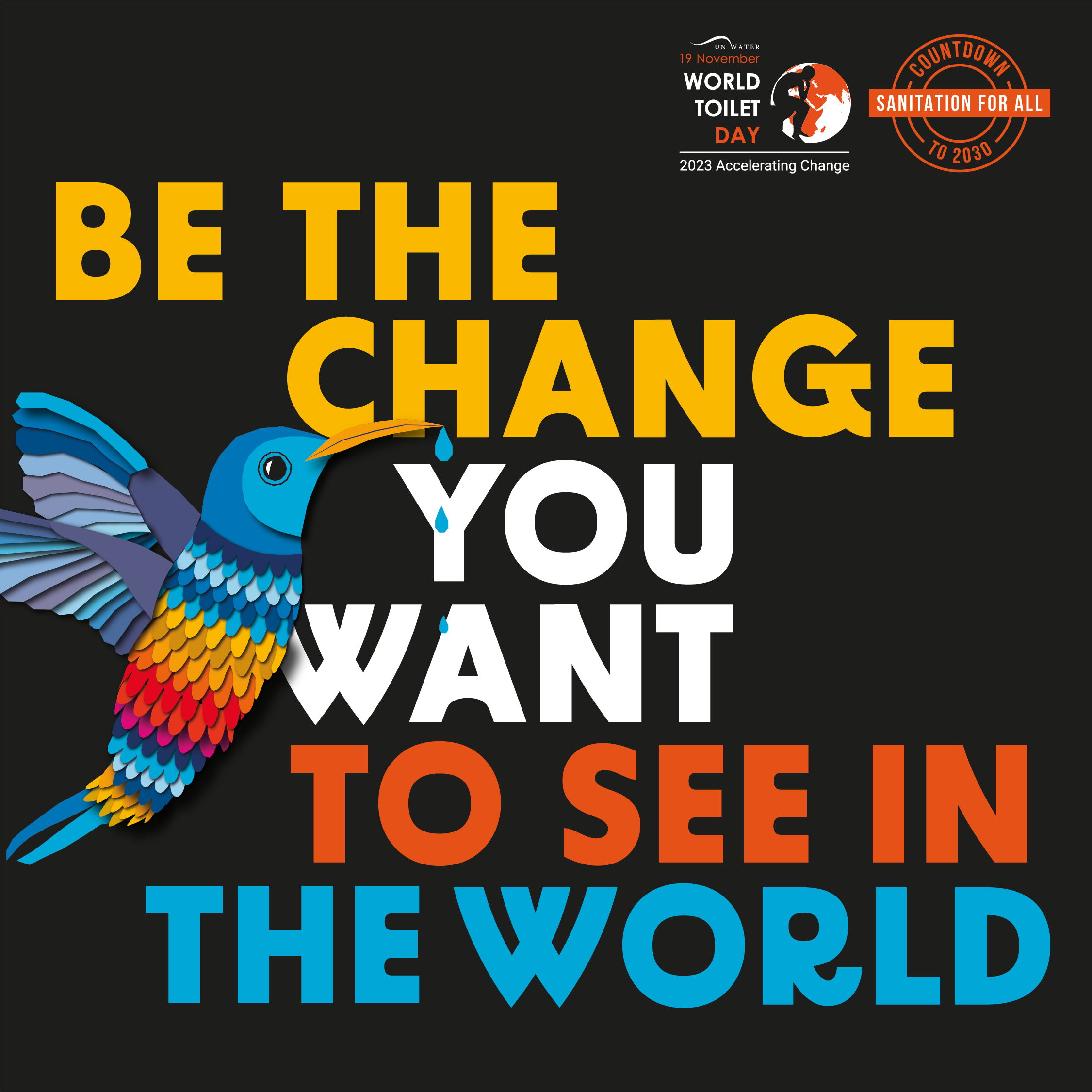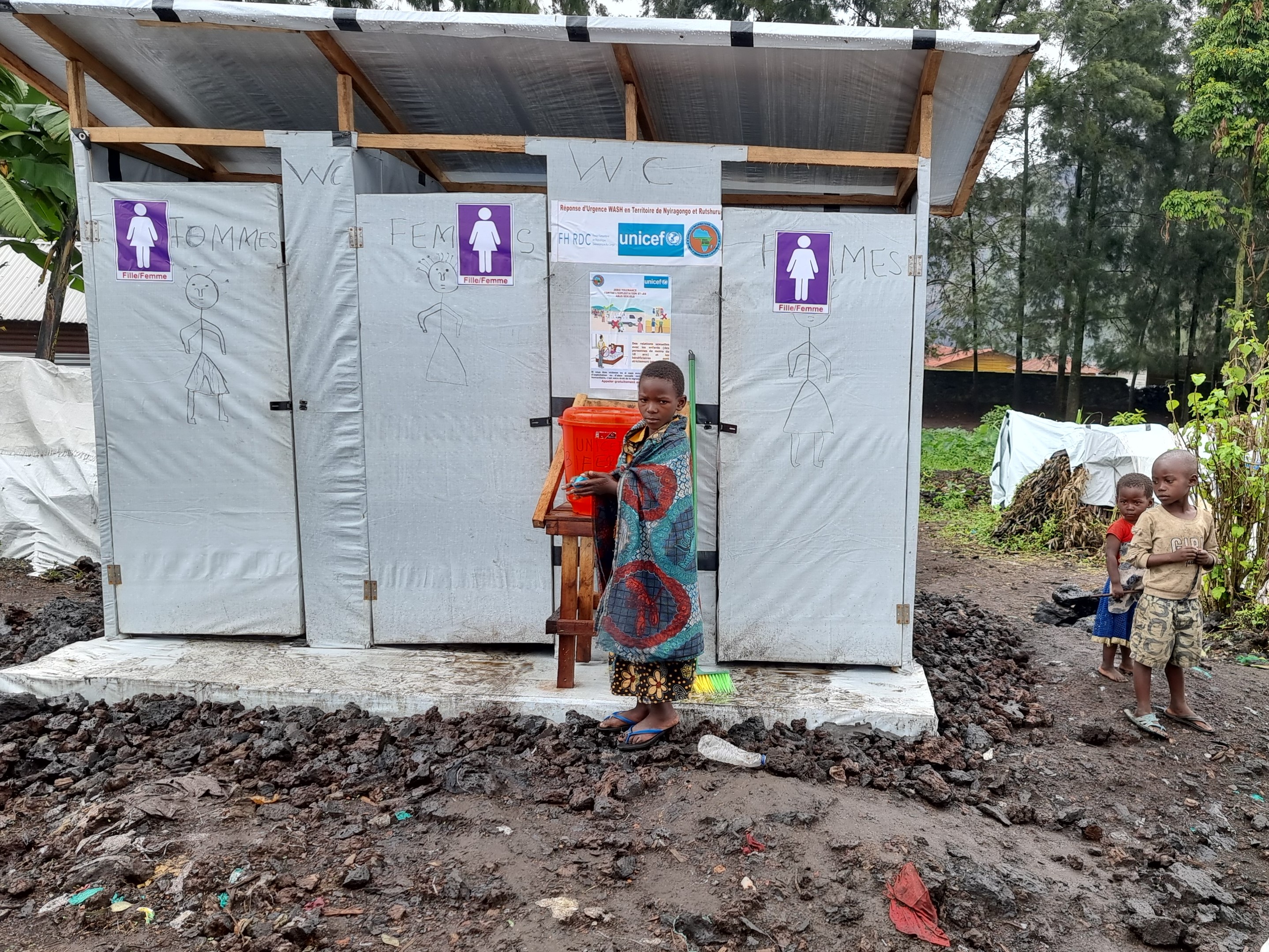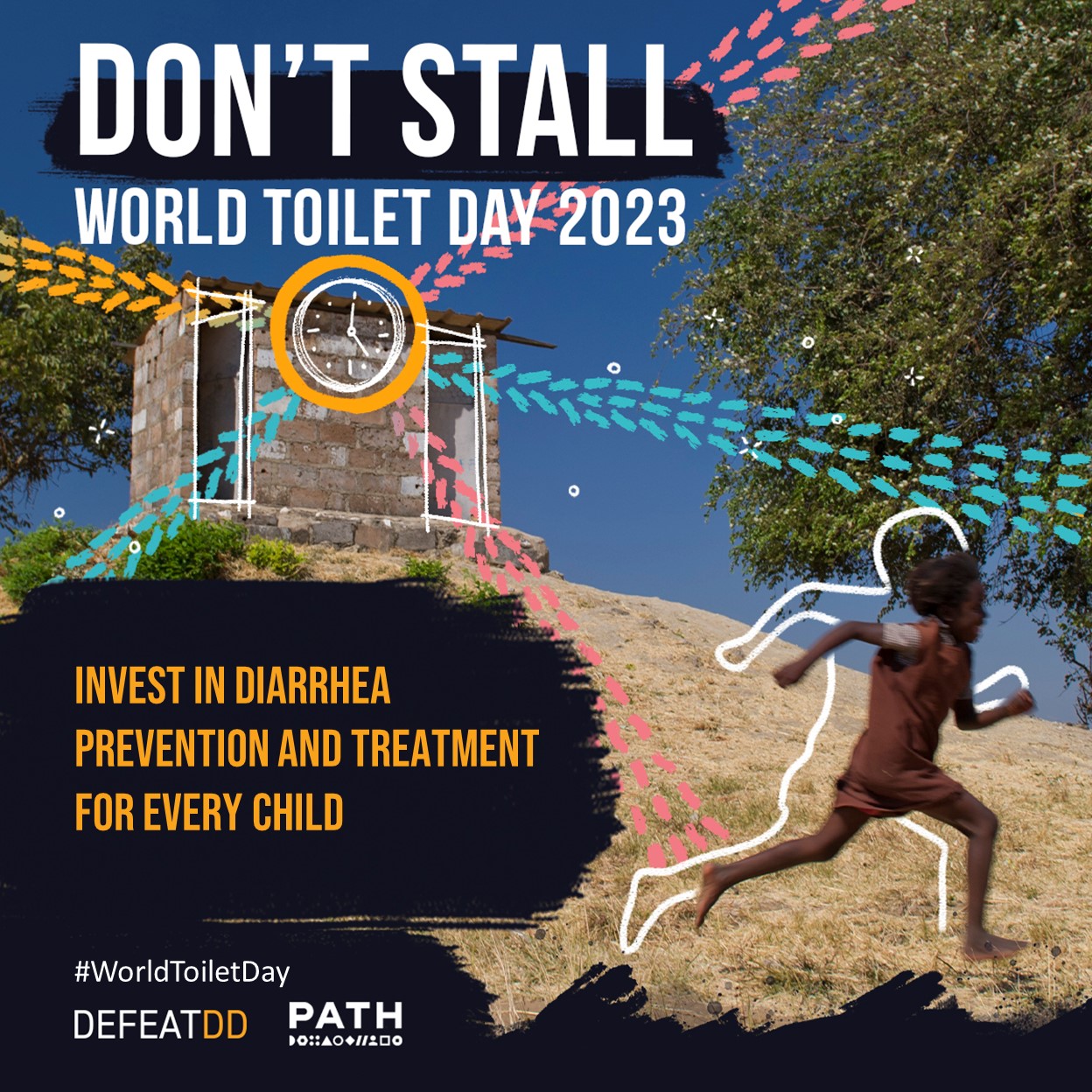World Toilet Day 2023: a time to remember that diarrhoeal disease is a global health crisis targeting our children
|

A woman standing in front of a well constructed toilet in Northwest Nigeria. Photo: UN-Water/Apochi Owoicho.
Sanitation is a human right and yet 3.5 billion people still have no safe toilets and 419 million still have to defecate in the open. The sanitation target of Sustainable Development Goal 6 (SDG 6.2) – “By 2030, achieve access to adequate and equitable sanitation and hygiene for all and end open defecation” – is in danger. With just seven years to go, the world must progress, on average, five times faster to meet this commitment on time.
The consequences of the global sanitation crisis are devastating for human and environmental health around the world. Infectious diseases, like the recent surge in cholera outbreaks, spread through exposed human waste, contaminated water and poor hygiene practices. Outbreaks are exacerbated by conflict and climate change and have a particularly devastating impact on young children.
What do the latest numbers tell us? Diarrhoeal disease ranks among the top ten causes of death for all age groups and is alarmingly positioned in the top five for children younger than five years old. In 2019, this pervasive ailment claimed approximately 1.5 million lives, a staggering 25% (or 381,000) of which were children younger than five years old. The same year witnessed 2 billion cases of diarrhoeal disease in children younger than 15 years old, underscoring the sheer magnitude of its impact on our youth. Moreover, beyond the immediate threat to life, diarrhoea stands as a primary culprit behind malnutrition in children under five, further compromising their growth and overall well-being.
Access to safely managed sanitation is solvable – it’s done every day in much of the world –and is a catalyst for every aspect of sustainable development, the integrity of the environment, and reducing the impacts of climate change. Yet, today, we have work to do to reach SDG 6.2.
The countdown to 2030 has begun. World Toilet Day 2023, on 19 November, is about accelerating change by doing whatever you can – big or small – to tackle the sanitation crisis.
For governments and institutions, the State of the World’s Sanitation report and the SDG 6 Synthesis Report on Water and Sanitation 2023 provide a “blueprint” to accelerate progress to get the world on track to achieve SDG 6 by 2030.
These ‘institutional’ actions form the Water Action Agenda, announced at the UN 2023 Water Conference in March 2023. The Agenda is the collection of more than 800 existing and new commitments on sanitation and water from governments, companies, organizations and other institutions. On top of this, over 7,000 members of the public have made their own promises via the Be the Change campaign.
The symbol of World Toilet Day 2023 (and World Water Day earlier this year) is the hummingbird, who, according to the ancient story, carries droplets of water in her beak to help put out a great fire. Her example shows that we can all do something – big or small – to tackle the sanitation crisis.

Here are a few examples of what you can do:
- Break taboos: Discuss the vital interplay among toilets, water supply and hygiene services in upholding human dignity, ensuring safety and strengthening societal resilience.
- Flush safe: Fix leaking water and waste pipes, empty full septic tanks, and report dumping of sludge.
- Stop polluting: Don’t put food waste, oils, medicines and chemicals down the toilet or drains.
- Build pressure: Use DefeatDD’s Don’t Stall campaign to call for greater investment. Write to elected representatives about budgets for improving water and sanitation at home and abroad.
In your professional capacity and your private lives, please do what you can to accelerate change this World Toilet Day.

Links for more information:
- Burden of disease attributable to unsafe drinking-water, sanitation and hygiene: 2019 update
- Progress on household drinking-water, sanitation and hygiene 2000-2022: Special focus on gender
- Strong systems and sound investments: Evidence on and key insights into accelerating progress on sanitation, drinking-water and hygiene (UN-Water Global Analysis and Assessment of Sanitation and Drinking-Water GLAAS 2022 Report)
- State of the world's sanitation: An urgent call to transform sanitation for better health, environments, economies and societies
- Guidelines on sanitation and health
- UNICEF Game Plan to Reach Safely Managed Sanitation 2022–2030











